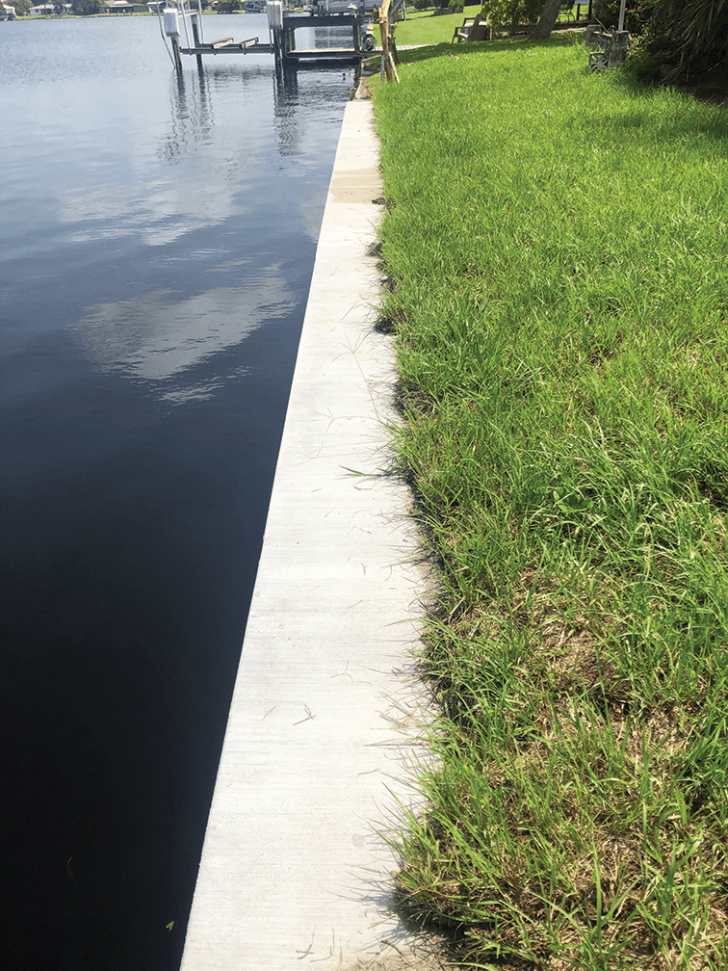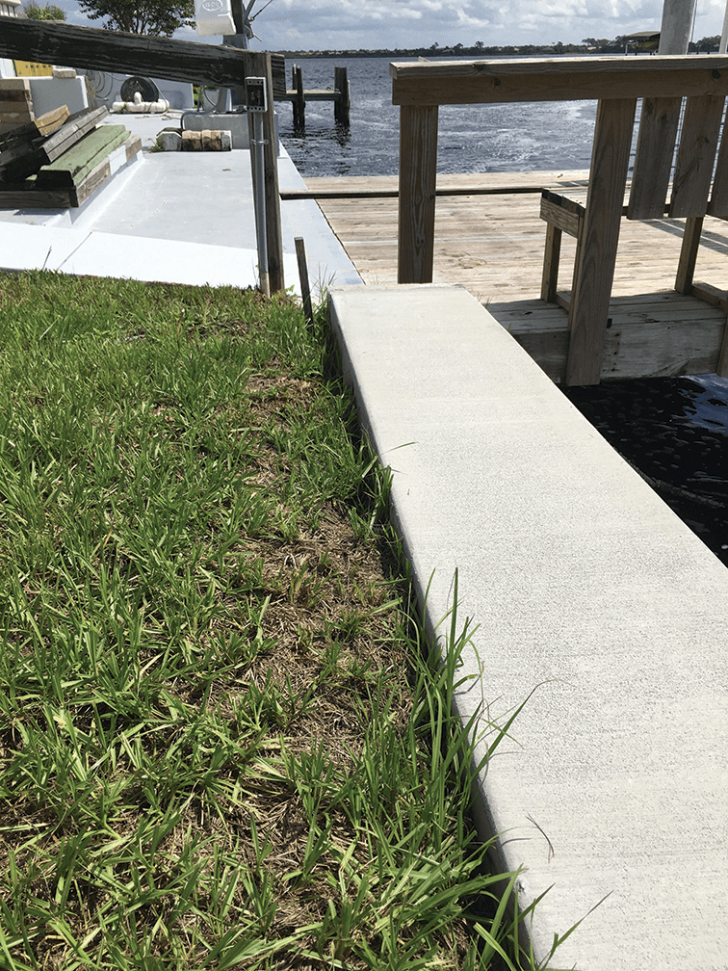by Ashlee R. Graham
Owning a waterfront home is naturally appealing and desirable. If your property is equipped with a seawall, there are a couple things that you, as the homeowner, can do to protect the longevity of your seawall and the integrity of your property. There are also warning signs to look for before your seawall fails.
When cutting your lawn, it is important that the grass is NOT edged at the seawall. The grass should stay level with and allowed to grow slightly over the seawall cap. This will help the water run over the top of the seawall cap rather than draining behind the seawall. If settlement along the rear of the seawall occurs and the ground is lower, water will not run over the cap, causing dirt to wash through the joints and seawall panels. This additional water can cause hydrostatic pressure, which can push the seawall outwards. If the grade is not to the top of the seawall cap, it can easily be corrected by adding more dirt, backfilling (if necessary), and reinstalling sod in the area.

Another thing to consider is ensuring your weep holes in the seawall are free and clear of debris. A weep hole is a small opening that will allow water to escape from behind the seawall and equalize the pressure. Over time, these holes can get clogged with leaves and other miscellaneous debris. Weep holes relieve the hydrostatic pressure from behind the seawall and prevent cracking and crumbling, so it is important that they do not get clogged.
Along with simple maintenance, there are also warning signs to look for before a seawall fails; the first of which is cracks in the seawall and/or seawall cap. Because a new seawall is going to settle a marginal amount, small hairline cracks may appear in the seawall cap. This is perfectly normal as concrete does tend to have small cracks over time. If the crack is big enough to put your finger in, this is when there may be a bigger issue and a licensed marine contractor should be called to inspect your seawall’s integrity.

Another thing to look for is major sink holes behind the seawall. Small holes are normal after a new installation, as the dirt will settle. These can easily be fixed by adding more dirt, marl, rock, or shell. If the sink hole continually gets larger, this may be an indication that the dirt is escaping from behind your seawall. Excessive dirt at the base and/or sides of the seawall may also indicate that there is a leak in need of repair. If you are experiencing any of these issues, contact a local licensed marine contractor to inspect your seawall.
